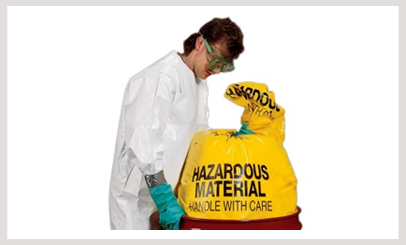

The purpose of the Hazardous Materials Plan, per CUPA, is to prevent or minimize the damage to public health and safety and the environment, from a release or threatened release of hazardous materials. It also satisfies community right-to-know laws. This is accomplished by requiring businesses that handle hazardous materials in quantities equal to or greater than 55 gallons of a liquid, 500 pounds of a solid, or 200 cubic feet of compressed gas, or extremely hazardous substances above the threshold planning quantity (40 CFR, Part 355, Appendix A) to:
Global Environmental Network, Inc. is committed to assisting our clients with regulatory compliance and the development of their Hazardous Material Management Plan(s).
ROUTINE, TRANSPORT, USE OR DISPOSAL OF HAZARDOUS MATERIALS CONSTRUCTION
Construction sites may require the limited use of some hazardous materials, including, but not limited to the following: gasoline, diesel, motor oil, hydraulic oil, solvents, and paint.
Improper management of hazardous materials during construction and operational phases of the development could pose a hazard to human health and the environment. However, management of hazardous materials during and after construction should follow best management practices and applicable laws regarding hazardous materials. Global Environmental Network, Inc. is committed to assisting our clients with regulatory compliance and the development of their Hazardous Material Management Plan(s).
Global Environmental Network, Inc. assures regulatory compliance with:
Department of Transportation
Transportation of hazardous materials on the highways is regulated through the Federal Department of Transportation (DOT) and the California Department of Transportation (Caltrans).
Department of Toxic Substance Control
The Department of Toxic Substance Control (DTSC) regulates hazardous waste, cleans up existing
contamination and looks for ways to reduce the hazardous waste produced in California. DTSC
regulates hazardous waste in California primarily under the authority of RCRA and the California
Health and Safety Code. DTSC oversees the implementation of the hazardous waste generator and
onsite treatment program.
Local and Regional Requirements
Local responsibility for hazardous materials oversight, permitting, and regulation is through the
Certified Unified Program Agencies (CUPA). These programs were developed when the State of
California delegated responsibility to local jurisdictions.